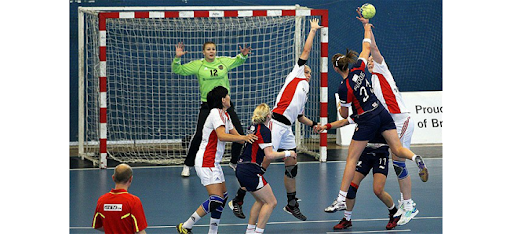Team Handball: The Fast-Paced Sport with Global Appeal

Team Handball: The Fast-Paced Sport with Global Appeal
Team handball, often simply referred to as handball, is a thrilling and dynamic sport that combines elements of basketball, soccer, and hockey. Played by over 27 million people in more than 180 countries, it stands as one of the most popular indoor sports worldwide. While it might not be as universally recognized as soccer or basketball, its fast-paced action and strategic gameplay have garnered a dedicated following and competitive leagues across the globe.
Origins and Evolution
Handball as we know it today originated in Northern Europe in the late 19th century. The modern game evolved from a variety of early European ball games, with its rules standardized in Germany in the early 20th century. The sport quickly spread throughout Europe, gaining popularity in countries like France, Denmark, and Sweden before eventually reaching other continents.
Gameplay and Rules
Team handball is played on a rectangular court with goals at each end, similar in dimensions to a basketball court. Each team consists of seven players: one goalkeeper and six outfield players. The objective is to throw the ball into the opponent's goal while adhering to strict rules on movement, dribbling, and defending.
Players move the ball by passing, dribbling (similar to basketball), or taking up to three steps without dribbling. The physicality of the sport allows for contact between players, making defensive strategies crucial. Goals are scored when the ball crosses the goal line into the net, with each goal counting as one point.
International Competitions and Popularity
Team handball enjoys significant popularity in Europe, where it is played professionally in leagues like the German Bundesliga and the Spanish Liga ASOBAL. The sport's global pinnacle is the World Championship, held every two years, and the Olympic Games, where handball has been a fixture since 1972 for men and 1976 for women.
National teams from powerhouse nations like Denmark, France, Germany, and Norway dominate international competitions, showcasing high-level skills and tactical prowess. The fast tempo of the game, combined with strategic timeouts and set plays, keeps fans on the edge of their seats throughout matches.
Growth and Accessibility
One of handball's strengths is its accessibility. Unlike many other sports that require extensive equipment or facilities, handball can be played with minimal equipment—a ball and a pair of sneakers—making it popular in schools and recreational settings. Its fast learning curve and emphasis on teamwork make it appealing to players of all ages and skill levels.
Conclusion
Team handball's blend of speed, skill, and physicality has earned it a dedicated following worldwide. Whether you're watching top-tier athletes compete in the Olympics or playing a friendly game at your local gym, handball offers excitement and entertainment for all. As the sport continues to grow globally, its future looks bright, promising more thrilling matches and inspiring new generations of players and fans alike.
In a world where sports often capture our attention through spectacle and athleticism, team handball stands out as a testament to the power of teamwork, strategy, and the joy of competition.
- Arts
- Business
- Computers
- Jogos
- Health
- Início
- Kids and Teens
- Money
- News
- Recreation
- Reference
- Regional
- Science
- Shopping
- Society
- Sports
- Бизнес
- Деньги
- Дом
- Досуг
- Здоровье
- Игры
- Искусство
- Источники информации
- Компьютеры
- Наука
- Новости и СМИ
- Общество
- Покупки
- Спорт
- Страны и регионы
- World


